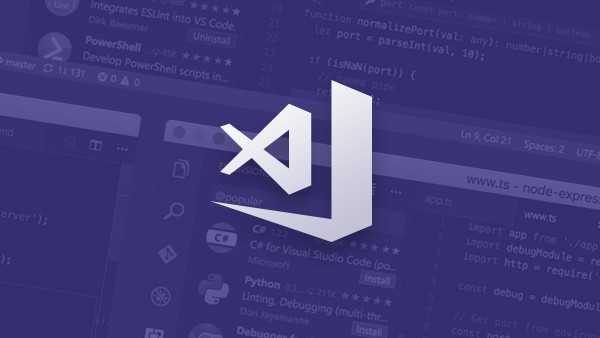Python 是一种高级编程语言,以其简洁和易读的语法而闻名。Python 广泛应用于各种领域,包括但不限于 Web 开发、数据分析、人工智能、机器学习、科学计算等。Python 的可读性强,代码结构清晰,使得它成为初学者和专家的首选语言之一。
Python 安装与环境配置Python 可以在多个操作系统上运行,包括 Windows、Linux 和 macOS。Python 官方网站提供了不同版本的 Python,包括最新的稳定版和开发版。为了开始使用 Python,你需要安装 Python 解释器。
安装 Python
- 访问 Python 官方网站(https://www.python.org/)。
- 在下载页面找到最新版本的 Python,选择适用于你操作系统的安装包。
- 运行下载的安装程序,并按照提示完成安装。
- 在安装过程中,确保选择“Add Python to PATH”选项,这将使 Python 可以从命令行使用。
配置环境
安装完成后,可以通过命令行验证 Python 是否安装成功。
python --version或者
python3 --version上述命令会输出 Python 的版本信息。
Python 基础语法代码结构
Python 的代码结构相对简单,不使用分号作为语句结束符,而是在块的结束时使用缩进。Python 使用冒号来指示新块的开始。
if 10 > 5:
print("10 is greater than 5")
print("This is still in the if block")
print("This is outside the if block")变量与类型
Python 是一种动态类型语言,这意味着你可以直接使用变量而无需声明其类型。Python 中的基本类型包括整型(int)、浮点型(float)、字符串(str)等。
a = 10 # 整型
b = 3.14 # 浮点型
c = "Hello, World!" # 字符串
d = True # 布尔型
e = None # NoneType字符串操作
字符串是 Python 中最基本的数据类型之一。字符串支持多种操作,如拼接、切片和格式化。
# 字符串拼接
str1 = "Hello"
str2 = "World"
result = str1 + " " + str2
print(result) # 输出: Hello World
# 字符串切片
text = "Python Programming"
print(text[0:6]) # 输出: Python
print(text[7:14]) # 输出: Programming
# 字符串格式化
name = "Alice"
age = 25
print(f"My name is {name} and I am {age} years old.") # 输出: My name is Alice and I am 25 years old.Python 中的控制结构包括条件语句(if 语句)、循环语句(for 和 while 循环)等。
条件语句
条件语句用于根据条件的真假执行不同的代码。
number = 10
if number > 0:
print("The number is positive")
elif number == 0:
print("The number is zero")
else:
print("The number is negative")循环语句
循环语句允许我们重复执行某些代码块,直到满足特定条件。
for 循环
for 循环常用于遍历序列(列表、元组或字符串)。
for i in range(5):
print(i) # 输出: 0, 1, 2, 3, 4
fruits = ["apple", "banana", "cherry"]
for fruit in fruits:
print(fruit) # 输出: apple, banana, cherrywhile 循环
while 循环会一直执行,直到条件不再满足。
count = 0
while count < 5:
print(count) # 输出: 0, 1, 2, 3, 4
count += 1Python 中的数据结构包括列表(list)、元组(tuple)、字典(dict)、集合(set)等。
列表
列表是一种可变序列,可以存储多个元素。
my_list = [1, 2, 3, 4, 5]
my_list.append(6)
my_list.remove(3)
print(my_list) # 输出: [1, 2, 4, 5, 6]元组
元组是不可变的序列,常用于固定的数据集合。
my_tuple = (1, 2, 3, 4, 5)
print(my_tuple[0]) # 输出: 1
# 元组操作实例
my_tuple = (1, 2, 3, 4, 5)
print(my_tuple[1:3]) # 输出: (2, 3)字典
字典是一种键值对的数据结构,用于存储可变的数据。
my_dict = {"name": "Alice", "age": 25}
print(my_dict["name"]) # 输出: Alice
my_dict["age"] = 26
print(my_dict) # 输出: {'name': 'Alice', 'age': 26}
# 字典操作实例
my_dict = {"name": "Alice", "age": 25}
my_dict["job"] = "Engineer"
print(my_dict) # 输出: {'name': 'Alice', 'age': 25, 'job': 'Engineer'}集合
集合是一种不重复的元素集合。
my_set = {1, 2, 3, 4, 5}
my_set.add(6)
print(my_set) # 输出: {1, 2, 3, 4, 5, 6}
my_set.remove(3)
print(my_set) # 输出: {1, 2, 4, 5, 6}
# 集合操作实例
my_set = {1, 2, 3, 4, 5}
my_set.add(6)
print(my_set) # 输出: {1, 2, 3, 4, 5, 6}
my_set.remove(3)
print(my_set) # 输出: {1, 2, 4, 5, 6}函数定义与调用
函数是可重用的代码块,用于执行特定的任务。
def add_numbers(a, b):
return a + b
result = add_numbers(3, 4)
print(result) # 输出: 7模块导入
Python 中的模块允许你组织代码,便于重用和维护。
import math
result = math.sqrt(16)
print(result) # 输出: 4.0Python 中的异常处理机制允许你捕获并处理程序中的错误。
try:
result = 10 / 0
except ZeroDivisionError:
print("Attempted to divide by zero")
except Exception as e:
print(f"An error occurred: {e}")
else:
print("No errors occurred")
finally:
print("This block will always run")Python 中的文件操作包括打开、读取、写入和关闭文件。
# 写入文件
with open("example.txt", "w") as file:
file.write("Hello, world!\n")
file.write("This is a test file.\n")
# 读取文件
with open("example.txt", "r") as file:
content = file.read()
print(content) # 输出: Hello, world!
# This is a test file.Python 是一种面向对象的语言,支持类和对象的概念。
类定义
class Person:
def __init__(self, name, age):
self.name = name
self.age = age
def greet(self):
print(f"Hello, my name is {self.name} and I am {self.age} years old.")
# 创建对象
p1 = Person("Alice", 25)
p1.greet() # 输出: Hello, my name is Alice and I am 25 years old.继承与多态
class Student(Person):
def __init__(self, name, age, grade):
super().__init__(name, age)
self.grade = grade
def study(self):
print(f"{self.name} is studying in grade {self.grade}.")
s1 = Student("Bob", 20, 2)
s1.greet() # 输出: Hello, my name is Bob and I am 20 years old.
s1.study() # 输出: Bob is studying in grade 2.类与实例
面向对象编程(OOP)是一种编程范式,它将数据和方法组织成对象。类是对象的蓝图,而对象是类的实例。
class Car:
def __init__(self, make, model, year):
self.make = make
self.model = model
self.year = year
self.odometer_reading = 0
def get_descriptive_name(self):
long_name = f"{self.year} {self.make} {self.model}"
return long_name.title()
def read_odometer(self):
print(f"This car has {self.odometer_reading} miles on it.")
my_new_car = Car("Toyota", "Corolla", 2021)
print(my_new_car.get_descriptive_name()) # 输出: 2021 Toyota Corolla
my_new_car.read_odometer() # 输出: This car has 0 miles on it.继承与多态
继承允许子类继承父类的属性和方法。多态允许子类重写父类的方法。
class ElectricCar(Car):
def __init__(self, make, model, year):
super().__init__(make, model, year)
self.battery_size = 60
def describe_battery(self):
print(f"This car has a {self.battery_size}-kWh battery.")
my_tesla = ElectricCar("Tesla", "Model S", 2020)
print(my_tesla.get_descriptive_name()) # 输出: 2020 Tesla Model S
my_tesla.describe_battery() # 输出: This car has a 60-kWh battery.装饰器
装饰器是一种特殊类型的函数,可以修改其他函数的功能或行为。
def my_decorator(func):
def wrapper():
print("Something is happening before the function is called.")
func()
print("Something is happening after the function is called.")
return wrapper
@my_decorator
def say_whee():
print("Whee!")
say_whee()
# 更复杂的装饰器实例
def uppercase_decorator(func):
def wrapper():
return func().upper()
return wrapper
@uppercase_decorator
def say_hello():
return "hello, world"
print(say_hello()) # 输出: HELLO, WORLD生成器
生成器是一种特殊的迭代器,可以在运行时生成值,而不是一次性生成所有值。
def count_up_to(n):
count = 1
while count <= n:
yield count
count += 1
for number in count_up_to(5):
print(number) # 输出: 1, 2, 3, 4, 5
# 更复杂的生成器实例
def fibonacci(n):
a, b = 0, 1
while a < n:
yield a
a, b = b, a + b
for num in fibonacci(10):
print(num) # 输出: 0, 1, 1, 2, 3, 5, 8异步编程
异步编程允许你写非阻塞的代码,从而提高程序的效率。
import asyncio
async def my_coroutine():
print("Starting coroutine")
await asyncio.sleep(1)
print("Coroutine ended")
async def main():
await my_coroutine()
asyncio.run(main())Python 拥有庞大的库和框架生态系统,支持各种应用场景。
Web 开发
Flask:轻量级的 Web 框架。Django:全功能的 Web 框架。FastAPI:高性能的 Web 框架。
数据分析
Pandas:数据分析和处理库。NumPy:数值计算库。Matplotlib:数据可视化库。
机器学习
Scikit-learn:机器学习库。TensorFlow:深度学习库。PyTorch:深度学习库。
Python 是一种强大而灵活的编程语言,适用于多种应用场景。通过学习 Python 的基础语法、数据结构、函数、类、异常处理等知识点,你将能够编写出高效、可读性强的代码。希望本文能为你学习 Python 提供帮助。如果你是初学者,建议从基础语法开始学习,并尝试编写简单的程序来巩固所学的知识。如果你已经有一定的编程经验,可以深入学习 Python 的高级特性,如装饰器、生成器等,以提高你的编程技能。

 随时随地看视频
随时随地看视频



